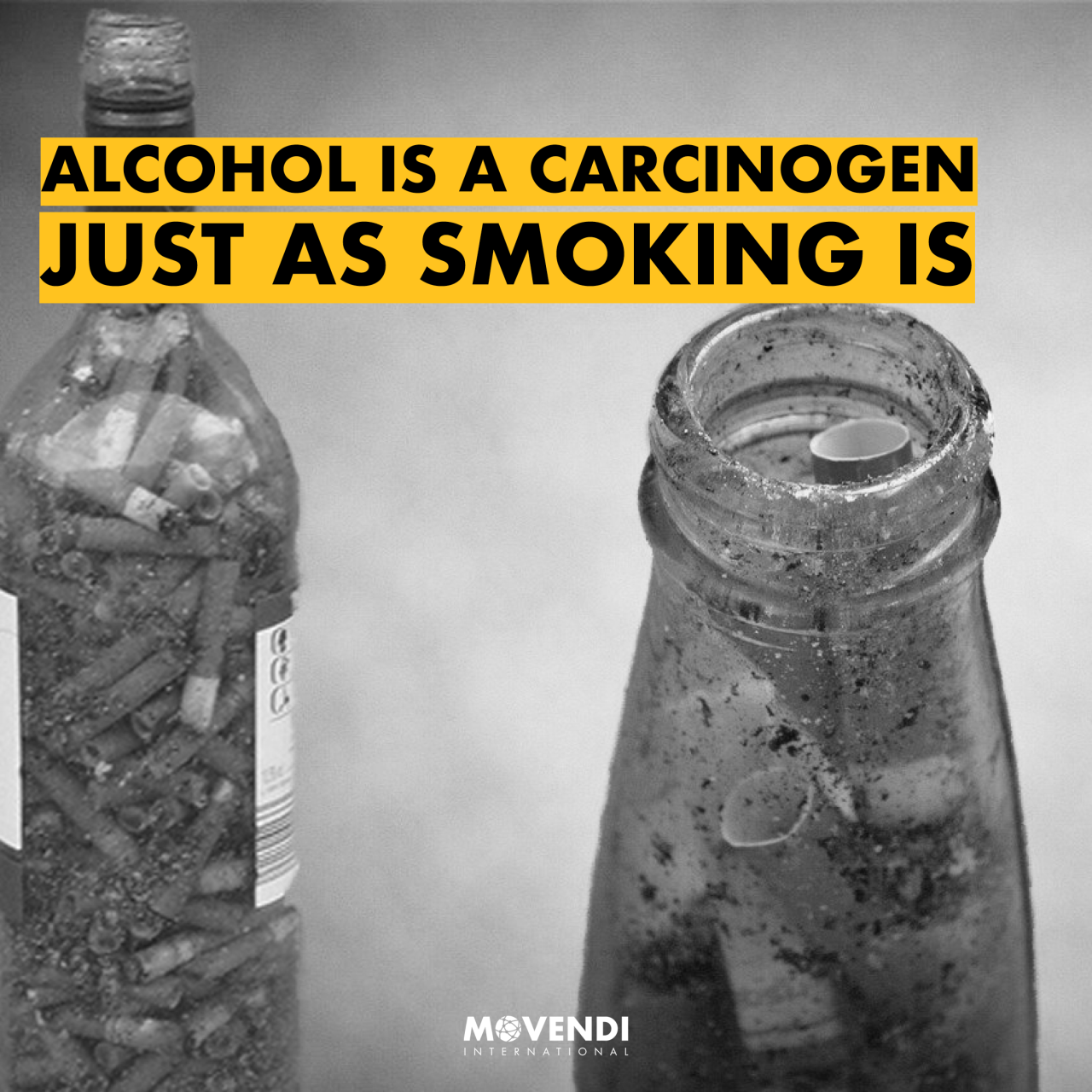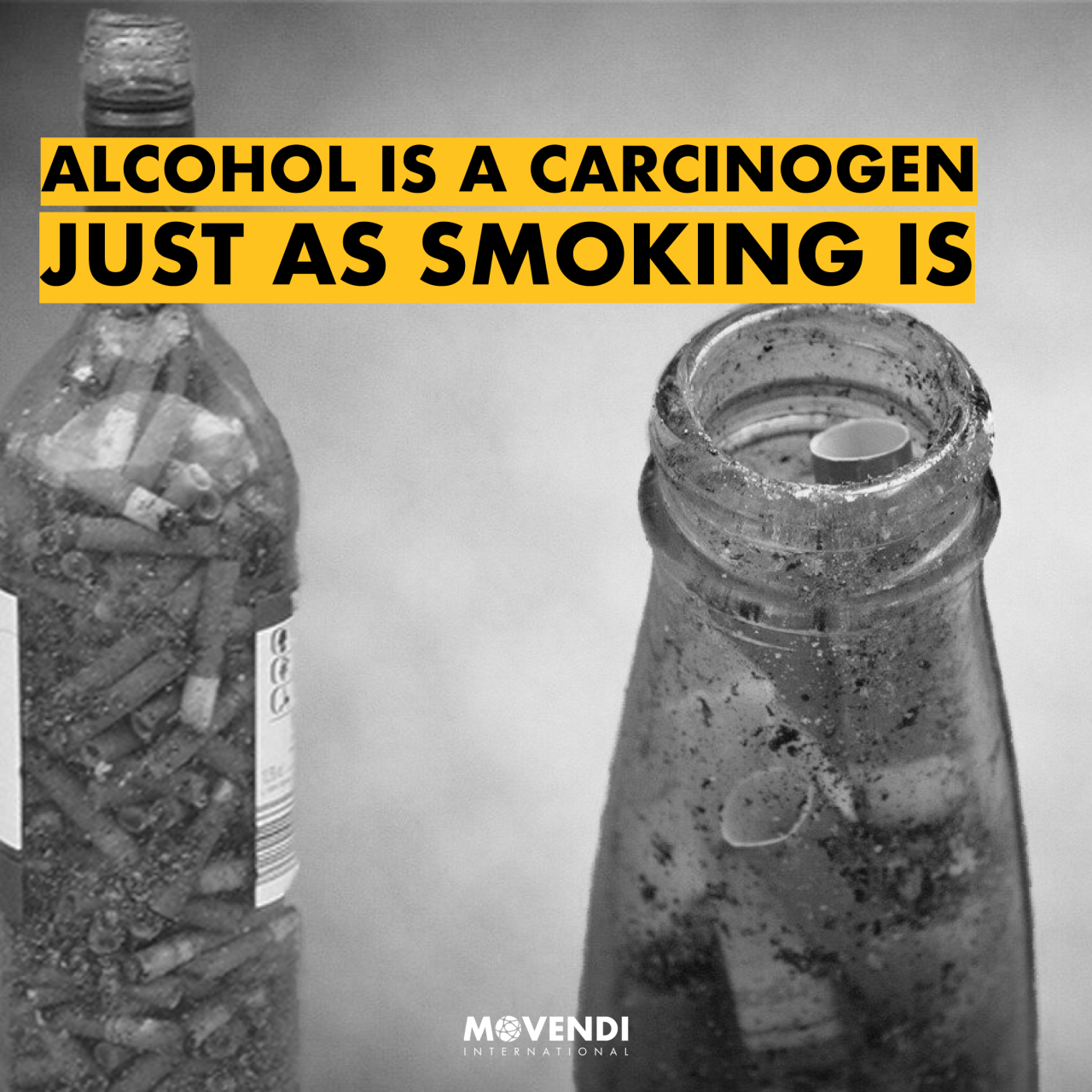Putting a cancer warning on alcohol is overdue, doctors say, and the debate is heating up. For years, the link between alcohol consumption and cancer has been scientifically established, yet alcohol packaging remains largely devoid of stark warnings. This article explores the compelling arguments for mandatory cancer warnings on alcoholic beverages, examining the scientific evidence, economic implications, public perception, international comparisons, and legal hurdles involved.
We’ll delve into the potential impact on public health, the effectiveness of different warning label designs, and the broader ethical considerations of such a significant policy change.
The call for action stems from growing concerns about the underestimation of alcohol’s carcinogenic effects. Many are comparing the situation to the delayed introduction of graphic warnings on cigarette packs, highlighting the potential for significant public health improvements with timely intervention. This piece will dissect the arguments for and against implementing these warnings, considering the perspectives of various stakeholders including health professionals, the alcohol industry, and the general public.
Public Health Implications of Alcohol Cancer Warnings
Adding cancer warnings to alcohol products could significantly impact public health. This section explores the potential effects on consumption rates, ethical considerations, comparisons with tobacco warnings, and proposes a sample warning label design.
Impact on Alcohol Consumption Rates
A well-designed and prominent cancer warning label on alcoholic beverages could potentially reduce consumption, particularly among vulnerable populations. The magnitude of this reduction would depend on factors such as the label’s design, the messaging used, and public awareness campaigns accompanying the implementation. Studies on tobacco warning labels suggest a correlation between stronger warnings and decreased smoking rates, providing a basis for similar predictions regarding alcohol.
Ethical Considerations of Mandatory Warnings
Mandating cancer warnings raises ethical questions. Concerns exist regarding potential infringements on industry freedom and the potential for misleading or overly alarming messaging. However, the counterargument emphasizes the public’s right to informed consent regarding health risks and the government’s responsibility to protect public health. A balanced approach, ensuring transparency and evidence-based messaging, is crucial.
Comparison with Tobacco Warning Labels
Tobacco warning labels have been in place for years, providing a valuable case study. Their effectiveness varies depending on design, messaging, and cultural context. Comparing their impact with potential alcohol warning label effects allows for informed policy decisions. A key difference lies in the societal acceptance of tobacco’s inherent harms, compared to the more socially acceptable nature of alcohol consumption.
Mock-up of a Cancer Warning Label
A proposed label could feature a stark image of a cancerous cell alongside a clear, concise message like “Alcohol increases your risk of cancer.” The label should be prominently placed on the front of the bottle, using easily understandable language and a high-contrast color scheme to maximize visibility. The font size and style should be legible even from a distance.
Additional information on specific cancer types linked to alcohol consumption and resources for further information could be included on the back label.
The Scientific Evidence Linking Alcohol to Cancer
Extensive research demonstrates a clear link between alcohol consumption and various cancers. This section summarizes the scientific evidence, detailing specific cancer types, incidence rates, and risk factors associated with alcohol use.
Summary of Scientific Research
Numerous epidemiological studies and meta-analyses have consistently shown a dose-response relationship between alcohol consumption and cancer risk. The more alcohol consumed, the higher the risk. This association is independent of other lifestyle factors and is supported by biological mechanisms showing how alcohol metabolites damage DNA and promote tumor growth.
Specific Cancer Types Associated with Alcohol Use
Alcohol consumption is linked to an increased risk of several cancers, including but not limited to breast, colorectal, liver, and esophageal cancers. The specific risk varies depending on the type and amount of alcohol consumed, as well as individual genetic factors.
Statistics on Alcohol-Related Cancer Incidence and Mortality
Globally, alcohol is a leading cause of preventable cancer deaths. Specific statistics vary by region and population but consistently demonstrate a significant contribution of alcohol to cancer burden. Data from organizations like the World Health Organization (WHO) and the Centers for Disease Control and Prevention (CDC) provide comprehensive information on alcohol-related cancer incidence and mortality rates.
Alcohol Type, Consumption Level, and Cancer Risk, Putting a cancer warning on alcohol is overdue, doctors say

The table below presents a simplified overview. Note that precise risks vary significantly based on factors beyond alcohol type and amount.
Doctors are pushing for cancer warnings on alcohol, and it’s about time! The sheer volume of data supporting this is overwhelming. If you’re interested in data analysis and want to learn more about interpreting complex information like this, check out these great it courses that can equip you with the skills to understand and communicate such vital health statistics.
Ultimately, clear labeling could save lives, and that’s a goal worth fighting for.
| Alcohol Type | Consumption Level | Associated Cancer Risks | Additional Notes |
|---|---|---|---|
| Beer | High (multiple drinks daily) | Increased risk of colorectal, liver, and esophageal cancers | Risk varies based on beer type and overall diet. |
| Wine | Moderate (1-2 drinks daily) | Potentially slightly reduced risk of cardiovascular disease, but increased risk of breast cancer | Potential benefits are often outweighed by increased cancer risk. |
| Spirits | High (multiple drinks daily) | Increased risk of liver, oral, and throat cancers | Higher alcohol content generally equates to higher risk. |
| All types | Binge drinking | Significantly increased risk across multiple cancer types | This pattern shows consistent evidence across all alcohol types. |
Economic Considerations of Alcohol Warning Labels: Putting A Cancer Warning On Alcohol Is Overdue, Doctors Say
Implementing alcohol cancer warning labels involves economic considerations for both the alcohol industry and healthcare systems. This section examines the potential economic impacts, comparing costs and long-term savings.
Economic Impact on the Alcohol Industry
Reduced alcohol consumption due to warning labels could negatively impact alcohol sales and industry profits. The magnitude of this impact is uncertain and depends on factors such as the effectiveness of the warnings and consumer response. However, the long-term benefits of reduced healthcare costs may outweigh these short-term economic losses for the industry.
Economic Benefits of Reduced Healthcare Costs
Decreased alcohol consumption would likely lead to fewer alcohol-related cancers, resulting in substantial healthcare cost savings. These savings would encompass reduced treatment costs, hospitalizations, and long-term care expenses. The precise savings are difficult to predict but would be substantial given the high costs associated with cancer treatment.
Cost-Benefit Analysis of Implementing Warning Labels
A cost-benefit analysis would compare the costs of implementing the warning label system (design, printing, distribution, public awareness campaigns) with the projected long-term savings from reduced healthcare expenditures. This would require sophisticated modeling, considering various scenarios and uncertainties.
Hypothetical Cost-Benefit Analysis
- Costs: $50 million for initial design and implementation, $10 million annually for ongoing maintenance and public awareness campaigns.
- Benefits: $1 billion in reduced healthcare costs over 10 years due to a 10% reduction in alcohol-related cancers (a conservative estimate).
- Net Benefit: A significant positive net benefit, even accounting for uncertainties and potential variations in the effectiveness of the warning labels.
Public Perception and Awareness of Alcohol Risks
Public reaction to alcohol cancer warning labels is crucial for their effectiveness. This section explores potential public responses, arguments against implementation, communication strategies, and the influence of label design.
Public Reaction to Cancer Warning Labels
Public reaction could range from acceptance and support to resistance and skepticism. Some may view the warnings as overly alarmist or an infringement on personal choice. Others may welcome the information and make informed decisions based on the increased awareness. Public opinion surveys and focus groups could provide valuable insights into potential responses.
Arguments Against Implementing Labels
Opponents may argue that the warnings are ineffective, alarmist, or an unnecessary government overreach. They might highlight the potential negative impact on the alcohol industry and the difficulty in accurately quantifying the risks of alcohol consumption. These arguments need to be addressed through evidence-based communication and transparent policy-making.
Strategies for Communicating Alcohol Risks

Effective communication strategies are essential. These should include targeted campaigns, utilizing various media channels to reach diverse populations. Clear, concise messaging is crucial, avoiding overly technical or sensationalized language. Collaboration with health organizations and community leaders can enhance the effectiveness of public awareness initiatives.
Doctors are pushing for cancer warnings on alcohol – it’s about time! While we fight for better public health, remember that pursuing a career in healthcare, like becoming a surgical tech, requires dedication. Check out the surgical tech program admission requirements and prerequisites to see if it’s the right path for you. Ultimately, raising awareness about alcohol’s dangers, and choosing a healthy career path, are both vital steps towards a healthier future.
Influence of Label Design on Public Perception

Different label designs can significantly influence public perception. A stark, graphic design might be more impactful but could also be perceived as overly frightening or alarmist. A more subtle, informative design might be less impactful but could be more acceptable to a wider audience. Testing various designs and assessing public response is crucial for optimal impact.
International Comparisons of Alcohol Warning Label Policies
Examining alcohol warning label policies in other countries provides valuable insights for policy development. This section compares and contrasts different approaches, identifying best practices and potential for international collaboration.
Comparison of Alcohol Warning Label Policies
Many countries have implemented alcohol warning labels, but their designs, content, and effectiveness vary significantly. Some countries have adopted comprehensive labels with detailed information on health risks, while others have simpler, less detailed warnings. A comparative analysis of these policies can reveal best practices and lessons learned.
Best Practices and Lessons Learned
Countries with successful alcohol warning label programs often employ strong, graphic warnings, clear and concise messaging, and comprehensive public awareness campaigns. Lessons learned from less successful programs highlight the importance of culturally sensitive messaging and effective enforcement.
Seriously, putting cancer warnings on alcohol is long overdue – doctors aren’t kidding. It’s a public health issue as significant as, say, understanding the intense rivalry between storied programs like you can read about in this article: Penn State vs. Notre Dame: Storied schools’ history ahead of 2028. Both issues demand attention, but clear warnings on alcohol could save lives.
Let’s prioritize health and safety.
Potential for International Collaboration
International collaboration can facilitate the sharing of best practices, research findings, and policy recommendations. This collaboration could lead to the development of more effective and consistent alcohol warning labels globally, reducing the global burden of alcohol-related diseases.
Comparison of Approaches in Different Countries
| Country | Label Design | Messaging | Effectiveness (Based on available data) |
|---|---|---|---|
| Canada | Graphic warnings and text | Focuses on health risks, including cancer | Moderate effectiveness reported, requires further evaluation |
| Australia | Plain packaging, with text warnings | Emphasizes health risks and responsible consumption | Some evidence suggests positive impact on awareness |
| United Kingdom | Text-based warnings, less graphic | Health warnings are less prominent | Limited evidence of significant impact, ongoing research |
Legal and Regulatory Aspects of Implementing Alcohol Cancer Warnings
Implementing mandatory cancer warnings on alcohol products involves significant legal and regulatory challenges. This section explores these challenges, regulatory processes, legal precedents, and the impact on alcohol advertising.
Legal Challenges Associated with Mandatory Labels
The alcohol industry might challenge mandatory labels on grounds of free speech, arguing that the warnings are overly restrictive or misleading. Legal precedents related to tobacco warning labels and other public health regulations could be relevant in these cases. A robust legal framework, ensuring the warnings are evidence-based and not overly alarmist, is essential to withstand potential legal challenges.
Regulatory Processes for Introducing a Policy
The regulatory process would involve various stages, including public consultations, scientific reviews, and legislative action. Collaboration with relevant stakeholders, including the alcohol industry, health organizations, and consumer groups, is crucial to ensure a transparent and inclusive process.
Relevant Legal Precedents
Legal precedents related to tobacco warning labels and other public health regulations provide valuable guidance. Cases involving restrictions on advertising and labeling of harmful products offer insight into the potential legal challenges and strategies for addressing them.
Impact on Alcohol Advertising Regulations
The introduction of mandatory cancer warnings could influence alcohol advertising regulations. Consistency between warning labels and advertising messages is crucial to avoid confusion and maintain public trust. This may require amendments to existing advertising codes to ensure that advertising messages do not contradict or undermine the health warnings on the products.
Last Recap
The evidence overwhelmingly supports the need for cancer warnings on alcohol. While the alcohol industry might raise economic concerns, the potential long-term savings in healthcare costs and the immeasurable value of preventing cancer cases far outweigh any short-term losses. Public education campaigns alongside clear and impactful warning labels can significantly improve awareness and reduce alcohol-related cancers. The ethical imperative to protect public health demands decisive action.
Delaying the implementation of these warnings is not only irresponsible but also a missed opportunity to save lives.
FAQ Resource
What types of cancer are linked to alcohol consumption?
Alcohol use is linked to several cancers, including breast, liver, colorectal, and mouth cancers.
How effective are warning labels on other products?
Graphic warnings on cigarette packs have demonstrably reduced smoking rates in many countries, suggesting similar potential for alcohol warnings.
What are the potential economic downsides of warning labels?
The alcohol industry may experience short-term revenue reductions, but these are likely outweighed by long-term healthcare cost savings.
What countries already have similar warning labels?
Several countries, including Canada and Australia, have implemented various forms of health warnings on alcohol products, offering valuable case studies.
